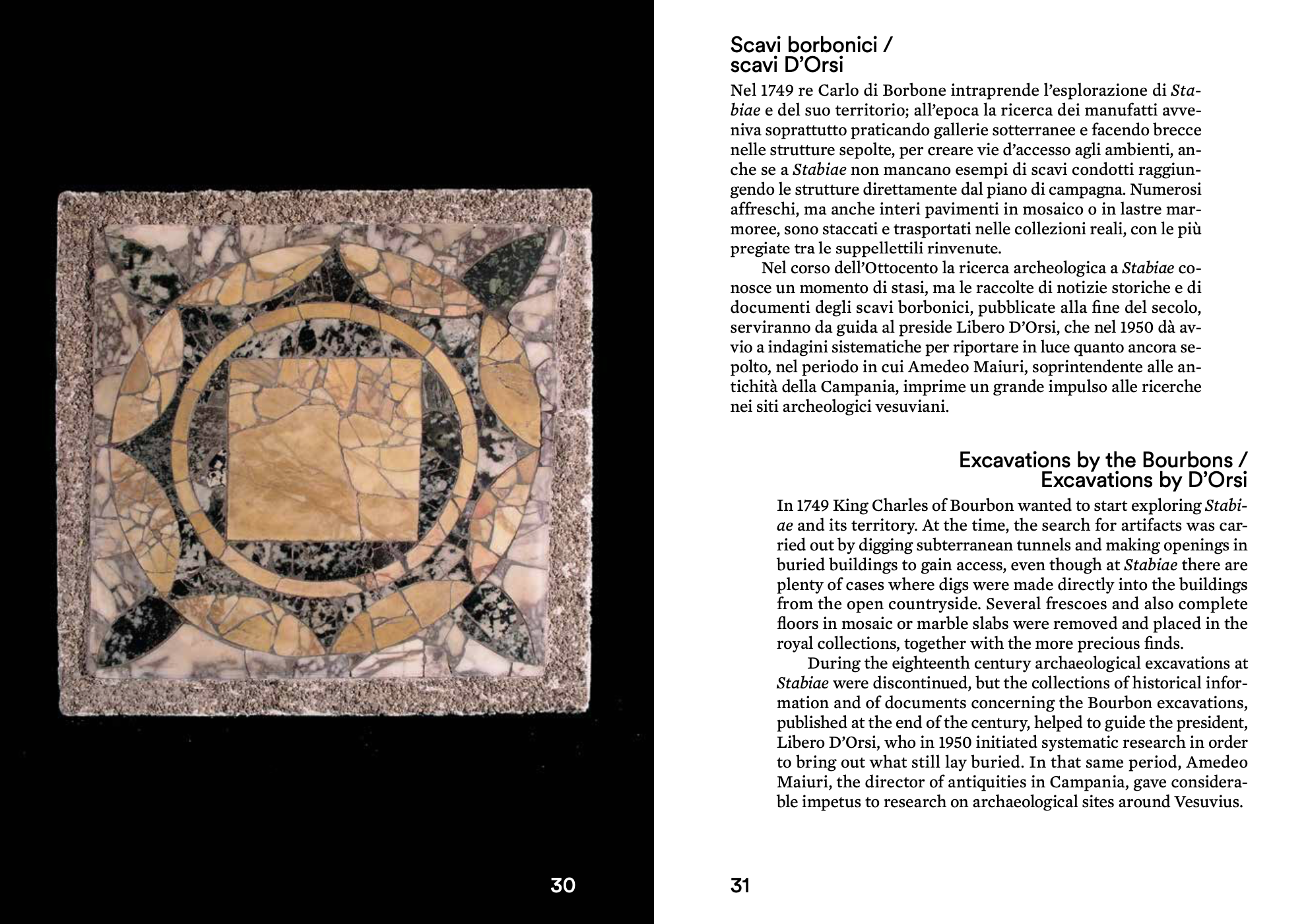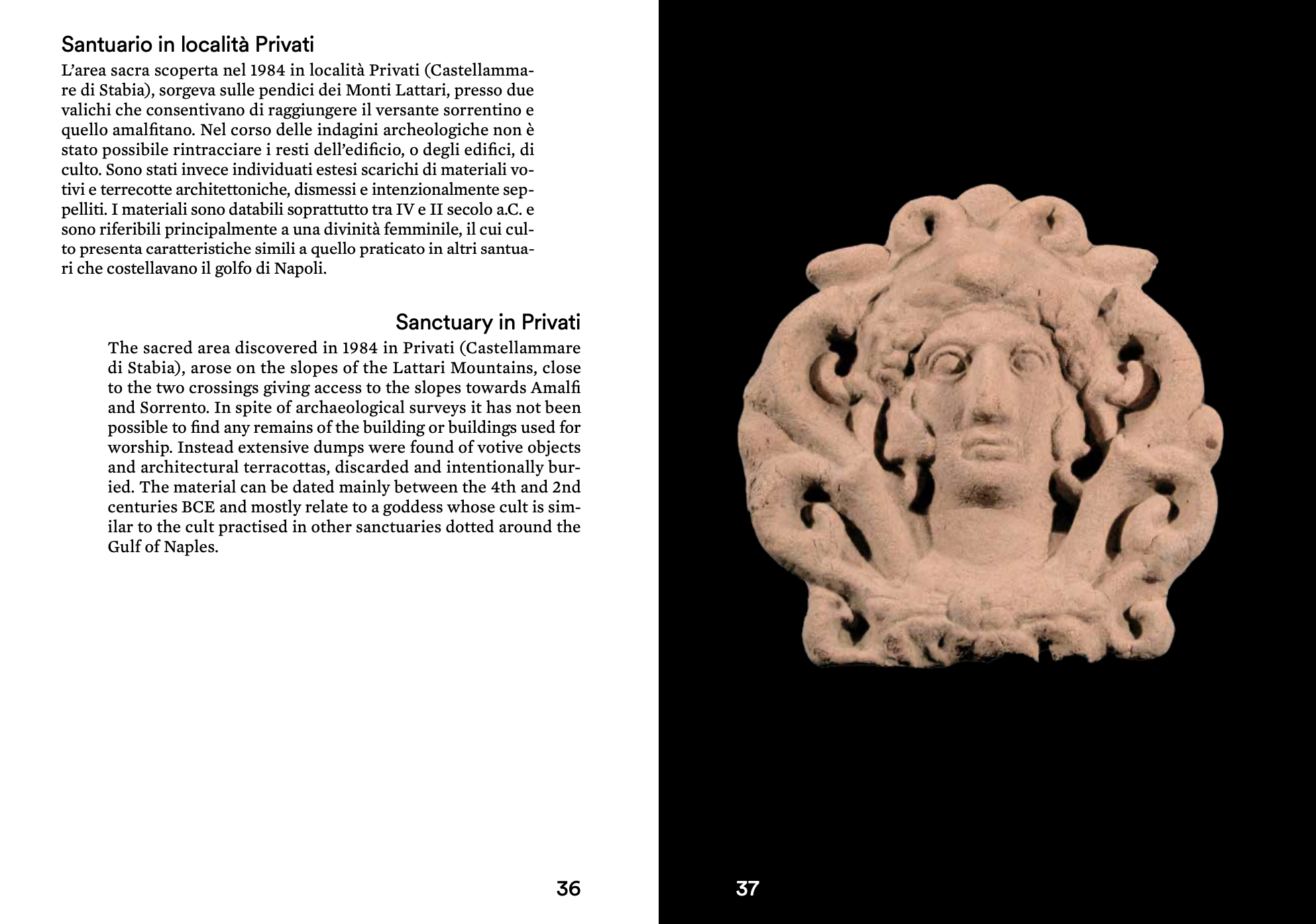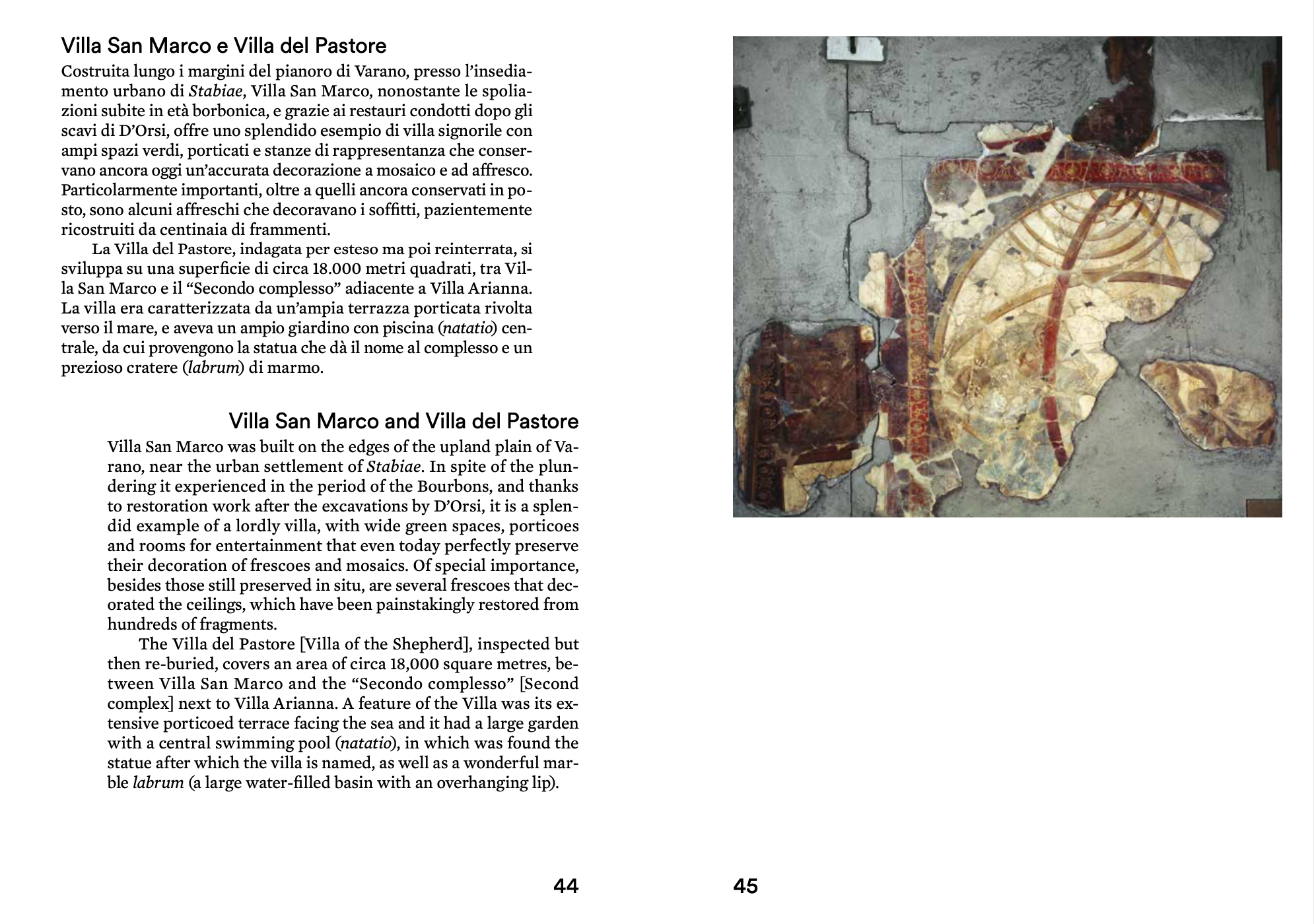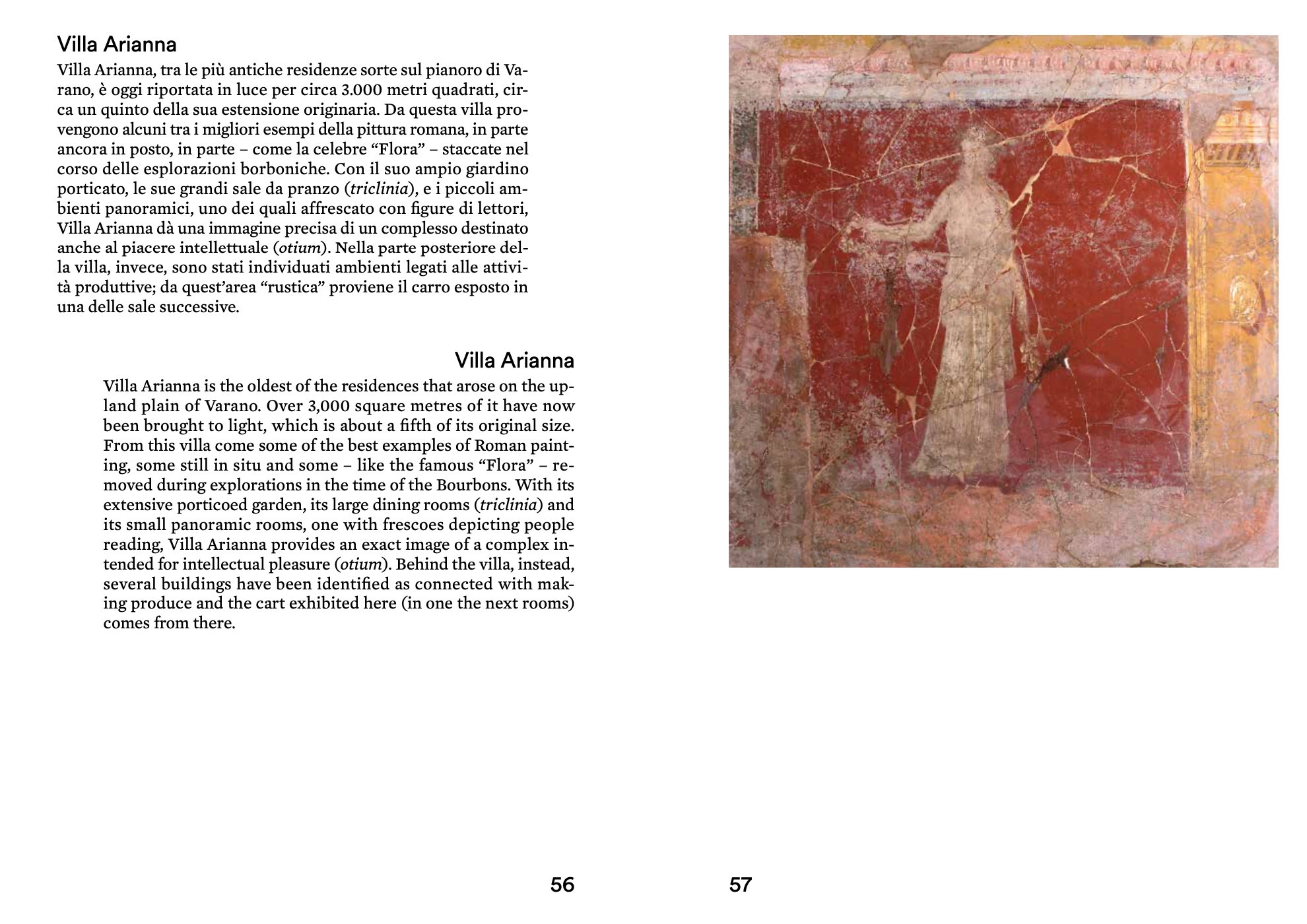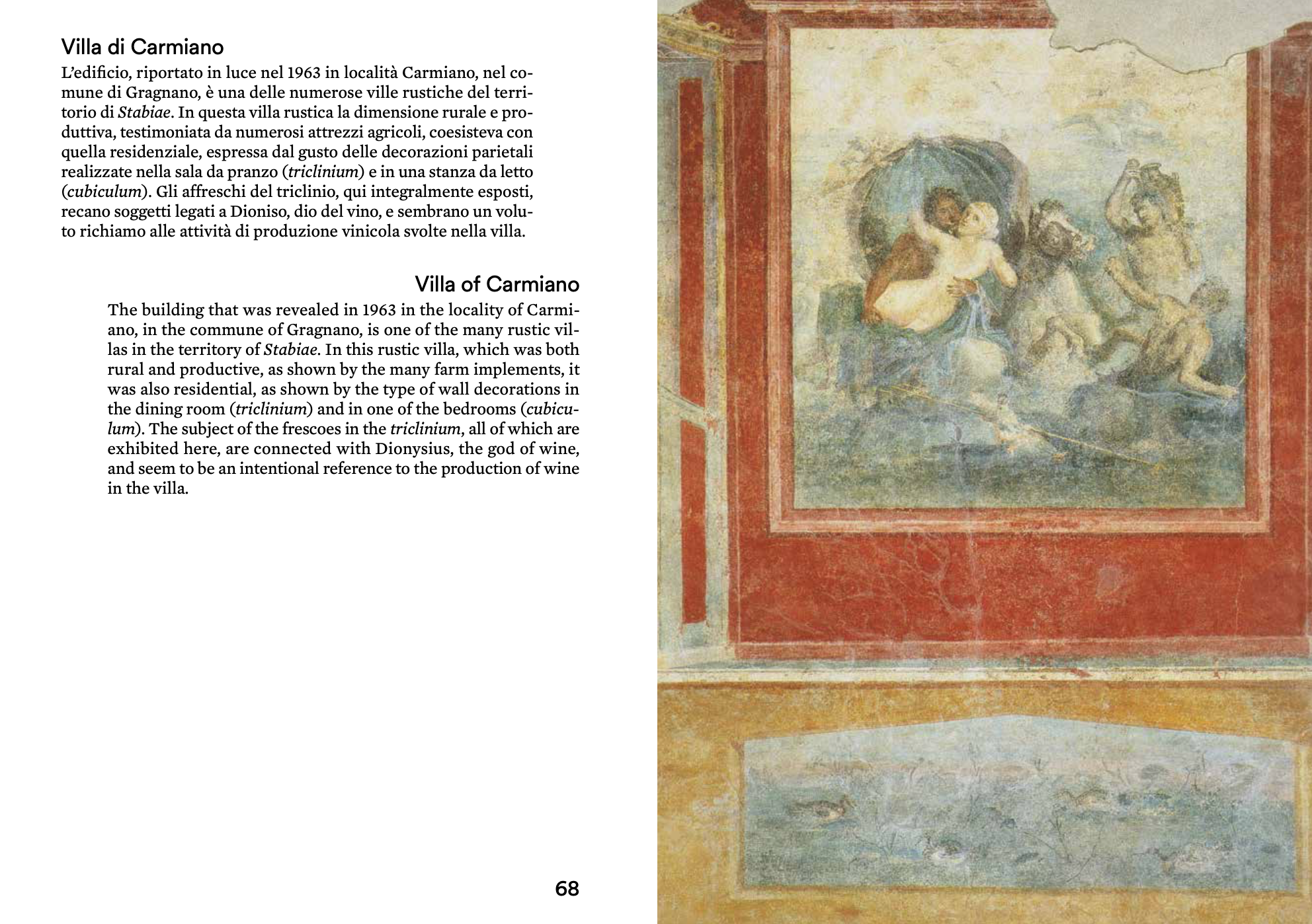After years of oblivion, the collection of the Museo Archeologico di Stabia (Archaeological Museum of Stabiae) reopens to the public in the Reggia di Quisisana (Quisisana Palace). This bilingual guide accompanies the visitor on an extraordinary journey through the history of the finds from the Roman villas of the gulf.
Libero D’Orsi (1888 – 1977) devoted much of his life and professional work to excavating the ancient Roman city of Stabiae. Beginning in the fifties, he brought to light the Roman villas located in the hills and then, with the finds recovered, organized the Antiquarium of Stabiae. As a tribute to the founder, the original exhibition layout of the Antiquarium, appropriately restored, is reused in the new Museo Archeologico which opens its doors in the Reggia di Quisisana, a villa for hunting and idleness, a destination on the Grand Tour and today restored to its ancient splendour.
This guidebook accompanies the visitor through the exhibition itinerary ordered chronologically: starting with the rich objects from the necropolis of Santa Maria delle Grazie and finds from the shrine of Privati dating back to the 6th century BC until to the Roman age, with furnishings and decorations from the splendid villas built on the Varano plateau and some lesser known rustic villas. In fact, in addition to the finds from the most famous villas of San Marco and Villa Arianna, we find the frescoes and stuccos of the Petraro and Carmiano’s villas. An interesting reconstruction of the triclinium depicted in one of the frescoed rooms is also proposed in the latter. Some sections are devoted to in-depth thematic studies, such as the preparation and consumption of food and the typical production and agro-pastoral activities of the area. Through engaging visual installations the intense thermal activity that has characterized the Stabian territory since ancient times is also represented.
The texts of the guide are by three outstanding authors: Massimo Osanna, museums general director of the Ministero dei beni e delle attività culturali e del turismo (Ministry of the Cultural Heritage, Activities and Tourism), Francesco Muscolino museum director and Luana Toniolo, Parco Archeologico of Pompeii archaeologist official.
